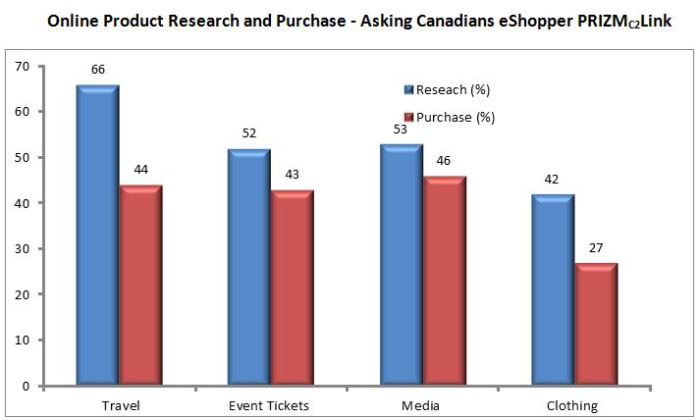
Technology Among The Middles
I am, as the expression has it, a man of a certain age. I grew up in the 60s and 70s and have seen a great many technological, social and economic changes during my academic and business career. To name a few, I can remember just about everyone smoking (and smoking in the office), pink telephone message slips (which seemed to multiply overnight), the word processing department, the coming (and going) of the fax machine, and the rise of the cubicle. In musical terms, I have lived through punk, disco, new wave, hip-hop, and rap, as well as the various dances and attitudes that those musical genres engendered. I was alive for the assassination of President Kennedy, the Civil Rights movement, the FLQ crisis, Apollo 11, and perhaps hardest to believe, the Toronto Maple Leafs winning the Stanley Cup. But all of those societal changes and challenges pale to the impact of the advance of technology on all of our daily lives.
We are all affected by technology, even in the most subtle ways. The rapidity of change can have a dizzying effect on even the most technophilic among us, and staying on top of these changes has literally become a full time job for some of us. In fact, many jobs (mine included) exist only because of the advent of new and powerful technology, and many others have disappeared as a result of automation and computerization. Thinking about this, I wanted to look at the effect these massive changes have had on my peers: have we wholeheartedly adapted to new technology or resisted change? Are there certain elements that we just abhor as a class or are there some things we can no longer live without? Has the swift pace of change affected our overall outlook? By “we”, I mean those of us who fit my general description, which I will call Middle Aged, Middle Class, or “Middles”, for short. The brief sketch: 45-55 years old, suburban, having larger families with older children than the norm, with occupations in management, finance, science or education. In other words, a stereotype of the 50s and 60s TV family. Are we Middles still trapped there, or have we moved with the times?
The Profile
Fortunately, to answer these questions, I have access to the entire Environics Analytics database, including the PRIZMC2 segmentation system. To begin, we selected several clusters which reflected the overall demographics of the Middles. These were:
2367a5532cde67f6a821ff0000150083-(1)02381a79f5b34b3e86ad9d1901e99a60.png?sfvrsn=75376ac0_0)
These clusters, which represent about 13.5 percent of the population, provided a general profile of the group, but in order to look more deeply into their lives, we used one of our flagship products, DemoStats (formerly Demographic Estimates and Projections) and a number of the PRIZMC2-linked datasets, including BBM RTS Canada; NADbank; the three AskingCanadians™ datasets: eShopper, Social Media and Mobile; the PMB Sports and Leisure Activities data; and Social Values from our sister company, Environics Research.
Core Values
To begin, look at the core Social Values of this group. For the Middles, the most highly ranked Social Values include Control of Destiny, Adaptability to Complexity in Life, Consumptivity and Vitality. Taken together, these Social Values paint a portrait of people who welcome new experiences, are unthreatened by change and who take an active interest in new and innovative ideas. Initially, it looks as though the Middles are a prime market for new ideas and technology.
985b6a519655472fa2ee274770cd4137.jpg?sfvrsn=4feaa06_0)
Media Consumption
According to their Social Values, my peers appear to have the essential attributes to maintain the pace of change. But do they? Having grown up with traditional mass media, do they stick with the old reliable forms, or do they embrace the new, digital channels? As you might expect, the answer to both questions is “Yes.”
In reviewing media consumption habits of the Middles, all three media measurement organizations (BBM RTS Canada, PMB and NADbank) report the following patterns:

Consumption of the first four media is unsurprising. After all, these are the traditional media that Middles grew up with. The media programs or categories that rank highly in all three studies include: News and Current Events, Sports and Documentaries. These are people with a thirst for information.
Considering the use of these mass media, the details for Internet usage are higher than expected. All three studies show the Middles to be heavy Internet users, with (according to the NADbank study) over 64 percent of Middles spending three hours per week or more online. BBM RTS Canada and PMB show approximately 30 percent of Middles in the “Heavy” user tercile, and usage is divided between work and home. Clearly, Middles love to access information the Internet provides. More to the point, they love the specificity of information the Internet can provide.
Online Activities
The AskingCanadians PRIZMC2-linked data provides insight into how Middles use the Internet. The Social Media data are most informative about the Middles’ use of online media, especially to obtain specific information. Middles are slightly below average Facebook users, and are well below average for Foursquare, Tumblr, and Twitter. They focus instead on LinkedIn, the business networking site, and various Wiki sites, such as Wikipedia. Overall, Middles are not big on recreational Social Media, that is, they tend not to read blogs, look at photos, play games or chat online. They do tend to be concerned about the level of privacy, or lack thereof, on these sites. Nearly 75 percent of Middles feel that “SM companies should not be allowed to own or share my personal information,” according to the AskingCanadians™ Social Media report.
This picture changes drastically when we look at the eShopper and Mobile results. Middles are very busy conducting online research, sharing information and making purchases over the Internet, especially in particular categories. The most active categories are: Vacation/Travel, Entertainment Events (movies, concerts), Media (books, movies, music), Clothing, and Gift Cards. And more than 80 percent used more than one online source to conduct product research. Other factors influencing purchase decisions include consumer feedback, brand loyalty, rewards programs and recommendations from friends and family. Again, they responded to a mix of online and traditional sources.

Middles’ preference to go and get information—rather than have it pushed to them—is reflected in their attitudes toward online advertising. The only communication that scores even moderately well is “an [email] communication from favourite retailers.” All other advertising and marketing activities, including static Internet banner ads, Search Engine ads, pop-ups and even personalized websites, score poorly. Text messages are actually detrimental for an advertiser.

Concerns over privacy are reflected here as well. Some 88 percent of Middles feel that “retail companies should not be allowed to own or share my personal information;” 82 percent say that “sharing personal information with retail companies might negatively impact my privacy.”
The Answer
Overall, my peers among Middles like the benefits that technology brings and adopt it willingly. From the AskingCanadians™ data, 62 percent report that “technology is important to me” personally, and 46 percent say they’re “willing to pay for technology products that save me time.” A key benefit, for 45 percent of respondents, is that “technology helps me increase flexibility between work and home.”
Based on the NADbank PRIZMCLink data, in the past two years, about 31 percent of Middles spent over $500 on home entertainment items, and 34 percent spent as much on computer equipment for home use. Next year, 81 percent plan on buying computer equipment.
In fact, Middles are above average in virtually every technology product category, except for basic cell phones (they prefer smart phones). They score well above average for iPads and other tablets, Blu-Ray players, DVR/PVRs, GPS devices, gaming consoles and home theatre systems. Digital cameras are nearly universal (92 percent ownership), as are DVDs (90 percent). And home computers (either desktop or laptop) are a given.
Middles love their gadgets, and for many reasons: They use them extensively to save time, to be entertained and to stay informed. Returning to the Social Values PRIZMC2Link data, a significant majority (89 percent) of Middles are “excited by the possibilities presented by the new technologies,” and 80% are also “interested in how our society is evolving and what may become of it.” Other attitudes reflective of this broad optimism and curiosity.
So it’s not just technology that Middles love, it’s the new experiences that come with the latest technology. No one wants to return to the past, even if it could be done. Having grown up with rapid change in nearly every aspect of our lives, Middles like me are looking for more. And the acceptance of changes in technology is just one aspect of this appetite for innovation. We look forward to the next big thing—maybe even a Stanley Cup in Toronto.
 As Vice President of Product Management and Client Services, Jim Green oversees a department charged with delivering high-quality service and support for EA applications and data products. From developing marketing research tools and selling media products to creating digital studies and overseeing product management, Jim has more than 25 years of experience in senior positions in marketing, sales and business development
As Vice President of Product Management and Client Services, Jim Green oversees a department charged with delivering high-quality service and support for EA applications and data products. From developing marketing research tools and selling media products to creating digital studies and overseeing product management, Jim has more than 25 years of experience in senior positions in marketing, sales and business development
